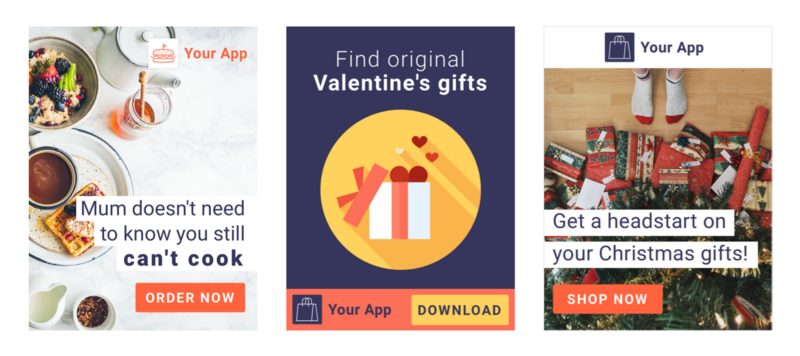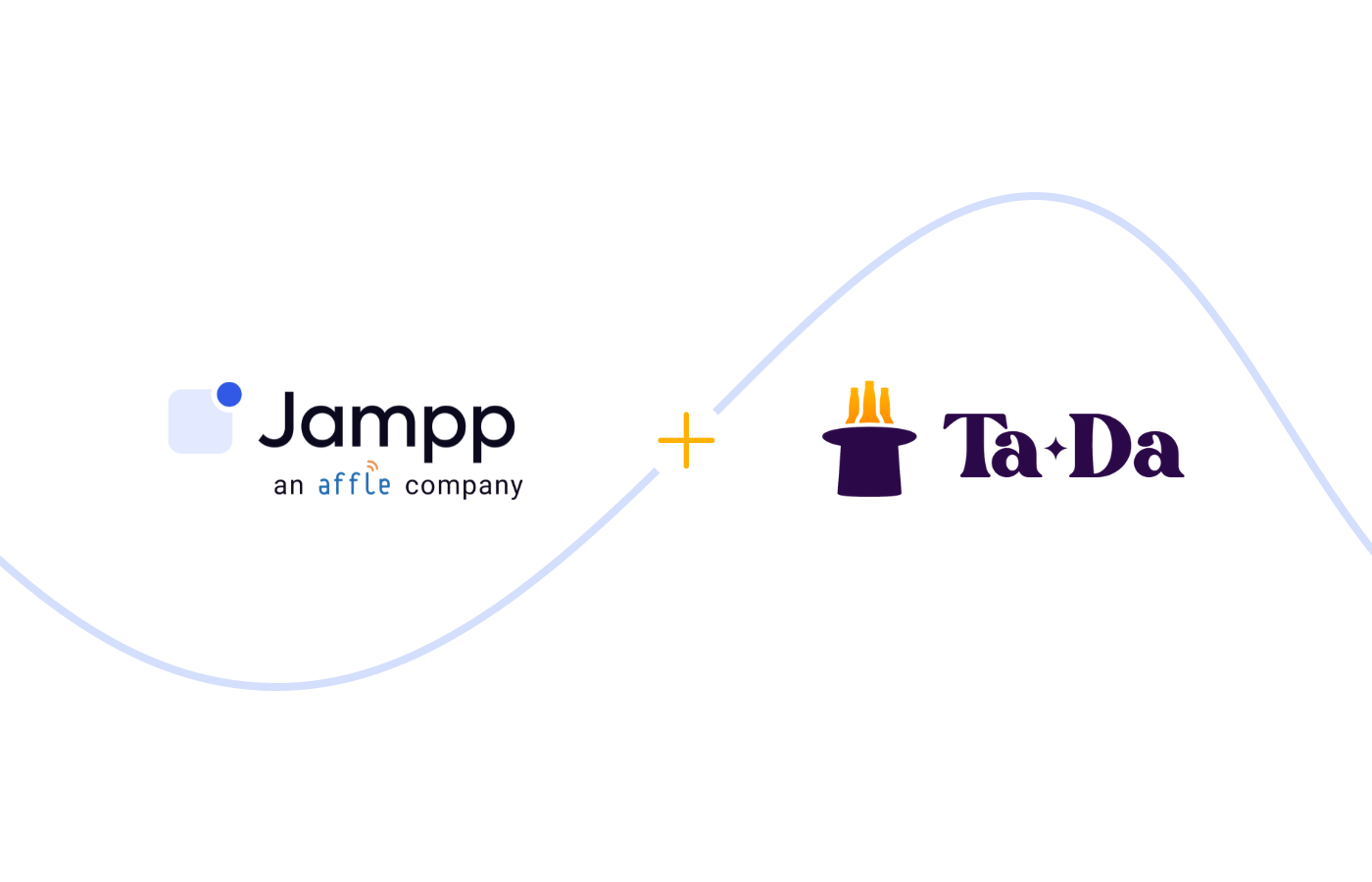This is how advertisers can use holidays and special dates to boost mobile sales
Special dates are top of mind for users: presents, outings, trips, a lot happens around the holidays… and advertisers need to be as active…
August 24, 2017

Special dates are top of mind for users: presents, outings, trips, a lot happens around the holidays… and advertisers need to be as active as their customers. Showing users how the app helps them tackle all these holiday-related activities is a way of showing ads that are relevant.
#1 The Message Matters
It’s not necessary to have a holiday discount or promo to make the most of the holiday buzz with themed creatives:

Advertisers who are already running a special offer around the holidays in their apps, should definitely promote it, but the key to success doesn’t lie in dropping prices. RELEVANCY trumps everything else.
More often than not, a successful Engagement strategy consists of a timely reminder: showing the right message, at the right time. While there is the occasional “I’m bored”, mobile gamers mostly, the majority of users turn to their apps for specific tasks, things they need or want to get done or find out (think weather, news, etc.). So if buying a gift is top of mind, advertisers can remind their users that their app is the best place to buy it.
#2 Distinguish User Acquisition and App Retargeting
Themed ads can work for both User Acquisition and Retargeting /Engagement campaigns… as long as advertisers don’t use the same ads for both. In other words: always always use different ads for User Acquisition and Engagement campaigns.

This is not a whim. There are actually a couple of reasons why it’s important to differentiate creatives for different campaigns.
- The end goal is different: If it’s an App Install campaign, the desired action is INSTALL or DOWNLOAD. If it’s an Engagement campaign, the desired action is an in-app conversion such as: BOOK FLIGHT, ORDER NOW or SUBSCRIBE. So far so good… now, what happens when a user who has already downloaded the app is shown a creative that says DOWNLOAD NOW? Nothing. Nothing happens. He or she will likely not click on it. Why would they?
- Users don’t study ads… they see them: (if successful they love them and click) But this means that while it’s important for the Call To Action (CTA) to be different, it can’t be the only difference between the User Acquisition set and the Retargeting set. In other words: don’t recycle ads by simply changing the CTA. Look at the two ads in the image below: in the seconds it takes users to decide between click and dismiss… they’re unlikely to notice so small a difference as the copy on the button if it’s the only difference. Simply put: include specific call to actions, but make sure the rest of the ad looks different too.

#3 Create more than one themed set
Programmatic ad buying allows you to automatically A/B test as many creatives as wanted. Impression level data means advertisers can easily understand which ads are resonating better with different group of users (maybe darker banners work better at night, and lighter in the mornings!). Which set gets more clicks? Which creatives generate more in-app actions?

#4 Different sizes and formats
(In line with the previous tip) the more the merrier… Leverage programmatic technology to run and test as many different sizes and formats as possible.

(!) Native images (1200x627) should not have copy or logo on them (assets are provided separately so that they may be combined to match the style of the app where they are shown… thus looking like a native rather than a foreigner on the other app 😉 )
(!) Don’t forget video: “By early 2016, 46% of all video plays happened on a mobile device. Experts believe that by 2020, mobile video will account for 75% of all mobile data traffic and many media platforms have improved their mobile video ad formats and capabilities as a result.” — The Drum
#5 Create a different set for each audience
In App Retargeting, it’s easy to create relevant variations based on users’ previous in-app behavior, for example, shoppings apps can show ads with items left in cart or from their wishlist and food delivery apps can show promotions or new partners.
In User Acquisition, marketers have less data points available, but contextual data does offer customization opportunities.
#6 When should the ads go live? How long should they run for?
This depends mostly on the magnitude of the holiday
- How long does the holiday last? Do events surrounding the date / holiday center around one day like Valentine’s Day? A week? A month? A season?
- How big is this event for your vertical? Christmas, for example, is huge for most retailers and users see ads as early as October.
- As a general rule, we recommend ads go live at least 1 week before the date (and the ads should run for the duration of the holiday).
(!) Themed ads should be cut off after the holiday has passed. RELEVANCE is key. Advertisers need to have a post-holiday set ready. This may be a generic set or post-holiday-themed:
- Best hangover-cure meals — Order now
- Missing mum’s home-made sandwiches? Try these
#7 Creative Basics — quick recap

While themed ads should look different/ stand out from the sets advertisers usually run, they still need to be on brand and follow the basic laws (?) of mobile creatives:
- Include Logo
- Include Call To Action (CTA), and make sure it specifies the user needs to take within the app: download for User Acquisition and browse, book, buy etc on Retargeting campaigns.
- Specific and relevant copy (under 50 characters)
- Stick to one message per ad
- Only include an image if it aids the message

Wrapping Up: 3 things to remember
Promos can work, sure. Who doesn’t love a discount? BUT unless the app sells coupons, discounts are not the reason users downloaded it. Users install apps to order food, book flights, shop for products they like and gifts to give. Since users are quite active around holidays and special dates, it’s a good time for advertisers to remind customers how their apps can help them carry out all these tasks.
Advertisers don’t need to run a themed set for every holiday out there. Instead they should find and focus on the ones that are most relevant for their audience (this will depend mostly on geo and app vertical).
analyze which ads are converting, in other words, what appeals to their users and what doesn’t.
Subscribe to our email newsletter









